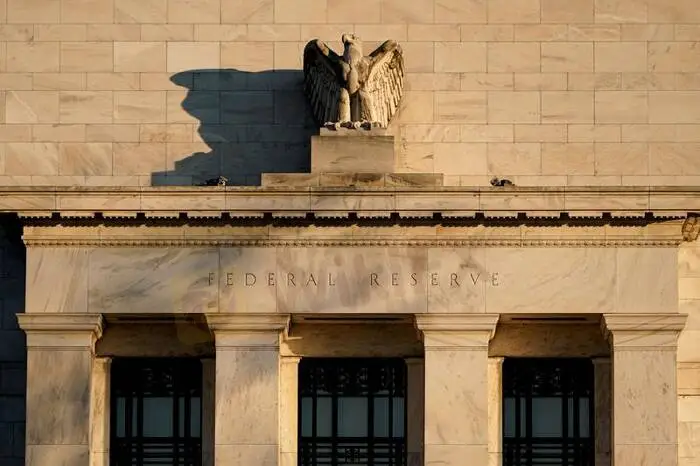简体中文
繁體中文
English
Pусский
日本語
ภาษาไทย
Tiếng Việt
Bahasa Indonesia
Español
हिन्दी
Filippiiniläinen
Français
Deutsch
Português
Türkçe
한국어
العربية
Analysis-Emerging market investors dive for stocks amid Fed storm
Abstract:Developing world investors, buffeted by various “taper tantrums” over the last decade, are now nervously watching as the rainmaker of global markets – the U.S. Federal Reserve – readies its most aggressive rate hike cycle in 17 years.

More hot jobs data on Friday drove the benchmark for world borrowing costs, the 10-year U.S. Treasury yield, to its highest level in two years, prompting yet more gnashing of teeth among emerging market money managers already having a tough year.
Deutsche Banks analysts point out that while some currencies managed to save face here and there, anyone who took the approach of hedging forex risk would have seen only one year that started worse than this one since 2010.
Fed tightening has not been bad news for all EM assets though.
EM stocks measured by MSCI‘s 25-country MSCIEF are flat for the year, which means they have done 5% better than their developed market peers, which is something of a pattern according to Morgan Stanley’s analysts.
“The outperformance of EM (stocks) after the first (Fed) hike is notable,” they said, noting that in Fed hike cycles since 1980, the MSCIEF has been up 17% on average six months after the first rate increase is delivered.
Morgan Stanley analysts have not yet made the call to “buy EM,” but they say “it suggests that the time to get more bullish on EM may be approaching.”
The massive outperformance from Latin American stocks in January could be a harbinger of more EM gains.
(Graphic: EM stocks vs U.S. rates, https://fingfx.thomsonreuters.com/gfx/mkt/akpeznebevr/Pasted%20image%201644004392617.png)
One silver lining in last years rout of Chinese stock markets is that many investors think they have a good chance of rebounding this year with authorities there now providing support to the economy again.
Swiss-based European fund heavyweight Pictet upgraded its view on Chinese stocks to “positive” this week on the basis of that support, and because they would probably be a good hedge in the event of a full-blown Russia-Ukraine military conflict.
“Chinese equities could recoup last year‘s declines and narrow the valuation gap with their counterparts in the coming months,” the firm’s chief strategist, Luca Paolini, said.
(Graphic: Chinese stocks make tentative recovery, https://fingfx.thomsonreuters.com/gfx/mkt/zdvxoanempx/Pasted%20image%201643806581616.png)
DORMANT DOLLAR
However, a more aggressive tightening cycle by the Fed and other top central banks could quickly reignite bond market pressures, said JPMorgans head of emerging market local markets and sovereign debt strategy, Jonny Goulden.
The “taper tantrum” shock of 2013-14, when the prospect of a reduction in post-financial crisis support from the Fed hit emerging market assets hard, still haunts EM veterans.
Returns on JPMorgans hard currency emerging markets bond index EMBI Global Diversified are -2.6% since the start of the year, while those for the local currency fixed income benchmark are at 1%.
“The Fed tightening cycle remains the focus for EM, but so far this year these pressures are curiously materializing in credit rather than local markets,” Goulden said in a note to clients on Friday.
“We would normally expect these forces to drive greater dollar strength, but EM FX (year-to-date) spot returns are +1%.”
Data on capital flows backed up this trend, Goulden added, saying short-term fund flows had also shifted with emerging market local bond funds pulling in more than $1 billion while hard-currency funds suffered $2.3 billion of outflows to start 2022.
Deutsche Bank said since 2013 Mexico, Poland, the Philippines and Hungary are the EMs with the highest correlation to rising U.S. yields, when looking at their local 10-year benchmarks.
“During large moves, we find that all countries (but China) have provided negative returns during periods of extreme bearish moves in U.S. Treasuries,” Deutsches analysts said, showing that bonds from Turkey, the Philippines, Mexico and Peru posted the biggest losses.
Given their expectation of a U.S. 10-year yield at 2.25% by the end of next month, DB analysts imply a forex-hedged return for EM fixed income that would actually outperform Treasuries on a “total return” basis which takes into account any currency move.
“However, this would still not necessarily be a strong buying argument at this point in time,” they said. “We recommend that despite the recent underperformance, investors maintain a more cautious approach on the asset class.”

Disclaimer:
The views in this article only represent the author's personal views, and do not constitute investment advice on this platform. This platform does not guarantee the accuracy, completeness and timeliness of the information in the article, and will not be liable for any loss caused by the use of or reliance on the information in the article.
Read more
Libertex Review 2025: Live & Demo Accounts, Withdrawal to Explore
Founded in 2012, Libertex is a Cyprus-based online broker providing both investment and trading services. They offer access to over 350 instruments, including CFDs and real stocks. Libertex has become a popular choice among retail investors, largely due to its competitive trading costs, robust trading platform, a 100% welcome bonus for new clients (subject to certain deposit requirements and trading activity), and the availability of fractional shares. However, notably, Libertex does not currently offer copy trading functionality and its educational resources are somewhat limited.
JustMarkets Review 2025: Live & Demo Accounts, Withdrawal to Explore
Established in 2012, JustMarkets (Formerly JustForex) is an online forex broker based in Cyprus and serves clients in over 160 countries. Featuring a low entry barrier, a 50% deposit bonus, and robust trading platforms -MT4 and MT5, JustMarkets has gained great popularity among retail investors in recent years. JustMarkets allows traders to trade over 260 CFD-based instruments, which is not an extensive range, yet on leverage up to 3000:1 to increase trading flexibility. To enhance the trading experience, both MT4 and MT5 are provided, along with JustMarkets Trading App, MetaTrader Mobile App, and MetaTrader WebTerminal. JustMarkets offers a 50% deposit bonus to boost traders' confidence. Opening an account is a fully online process, typically completed within one day.

CM Trading Review 2025: Accounts, Demo Account and Withdrawal to Explore
CM Trading is a South Africa-based online broker operating for 10 years, providing trading on Forex, Commodities, Indices, Stocks, and some Cryptos. Among many forex broker options in South Africa, CM Trading struggles to be the popular one due to its high costs for live accounts and wide spreads. Instead, it is considered an expensive broking. To open a live account, traders need to fund at least $299, less friendly to beginners. However, CM Trading compensates for this by offering large amounts of bonuses up to $150,000. Notably, CM Trading does not provide any popular copy trading solutions.

FBS Review 2025: Accounts, Withdrawals & Trading Platforms to Explore
FBS, more of an A-Book broking company, offers trading services through its three entities in Belize, Australia, and Europe, respectively. With the FBS platform, traders can get access to over 550 CFD-based instruments, including Forex, Indices, Energy, Stocks and Cryptocurrency through the FBS App and MetaTrader suite—MetaTrader 4 and MetaTrader 5. FBS's shining features, an extremely low entry barrier from $5 and its generous leverage up to 3000:1, attract active traders the most. competitor However, FBS does not provide tiered account options, only one live account offered for all investors, but opening an account here is quick and easy. FBS's copy trading solution—FBS Copytrade, while once available, isn't as user-friendly or prominently featured as those offered by competitors, closed in 2022, restricting beginners' access to simpler trading approaches.
WikiFX Broker
Latest News
Germany's Election: Immigration, Economy & Political Tensions Take Centre Stage
WikiFX Review: Is IVY Markets Reliable?
Brazilian Man Charged in $290 Million Crypto Ponzi Scheme Affecting 126,000 Investors
ATFX Enhances Trading Platform with BlackArrow Integration
Become a Full-Time FX Trader in 6 Simple Steps
IG 2025 Most Comprehensive Review
SEC Drops Coinbase Lawsuit, Signals Crypto Policy Shift
Construction Datuk Director Loses RM26.6 Mil to UVKXE Crypto Scam
Should You Choose Rock-West or Avoid it?
Franklin Templeton Submitted S-1 Filing for Spot Solana ETF to the SEC on February 21
Currency Calculator






